
ABDOMINAL INCISIONS

A cut produced surgically by a sharp instrument that creates an
opening into the abdomen
When choosing an incision these three should be achieved:
Accessibility
Extensibility
Security
Re-entry into the abdominal cavity is best done through the previous
laparotomy incision. This minimizes further loss of tensile strength of
the abdominal wall by avoiding the creation of additional fascial
defects

CLASSIFICATIONS:
Vertical incision
◦
Midline incisions
◦
Paramedian incisions
Transverse and oblique incisions
◦
Kocher's subcostal Incision
◦
Chevron (roof top Modification )
◦
Mercedes Benz Modification
◦
Mc Burney’s grid iron or muscle splitting incision.
◦
Rutherford morison incision
◦
Pfannenstiel incision
◦
Maylard Transverse Muscle cutting Incision
◦
Transverse muscle dividing incision
Thoracoabdominal incisions.

MIDLINE
-the most common incision
three types:
Upper Midline Incision
◦
From xiphoid to above umbilicus.
◦
Skin superficial and deep fascia linea alba extraperitoneal fat peritonium.
Lower Midline Incision
From the SUPERIOR umbilicus to INFERIOR pubic symphysis .
Full Midline Incision
From xiphoid to pubic symphysis inferiorly.

Advantages:
◦
Adequate exposure of most if not all of the abdominal viscera
◦
It is almost bloodless.
◦
No muscle fibers are divided.
◦
No nerves are injured.
◦
It is very quick to make as well as to close.
Disadvantages:
◦
More painful.
◦
Chest complications.
◦
Wound infection, Ugly scar, Incisional hernia, etc.

PARAMEDIAN
2 to 5 cm lateral to the midline.
skin fascia anterior rectus sheath The posterior rectus sheath or
transversalis fascia extraperitoneal fat and peritoneum are then excised
allowing entry to the abdominal cavity
Skin and subcutaneous fat are divided along the length of the wound. The
medial portion of the rectus sheath then is dissected from the rectus muscle, to
which the anterior sheath adheres Once the rectus muscle is free of the anterior
sheath it can be retracted laterally because the posterior sheath is not adherent
to the rectus muscle. The posterior sheath and the peritoneum which are
adherent to each other, are excised vertically in the same plane as the anterior
fascial plane
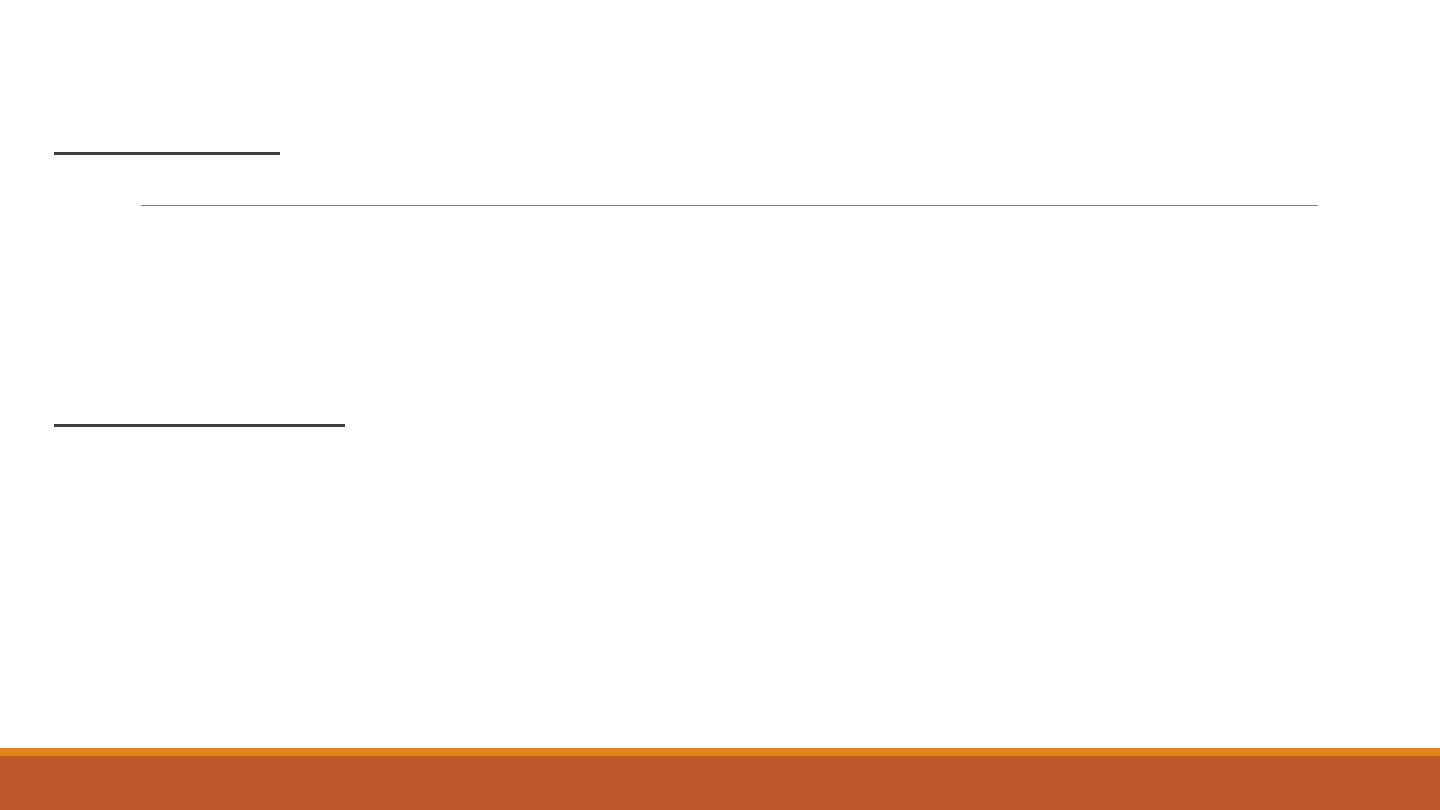
Advantages
◦
Provide an access to the lateral structure such as the spleen or the kidney
◦
The closure is theoretically more secure because the rectus muscle can act as
a support between the reapproximated posterior and anterior fascial planes
so lower risk of dehiscence and hernia as compared to midline incision
Disadvantages
◦
Takes longer to make and close
◦
results in atrophy of the muscle medial to the incision
◦
The incision is laborious and difficult to extend superiorly as is limited by
costal margin.
◦
Risk of epigastric vessels injury
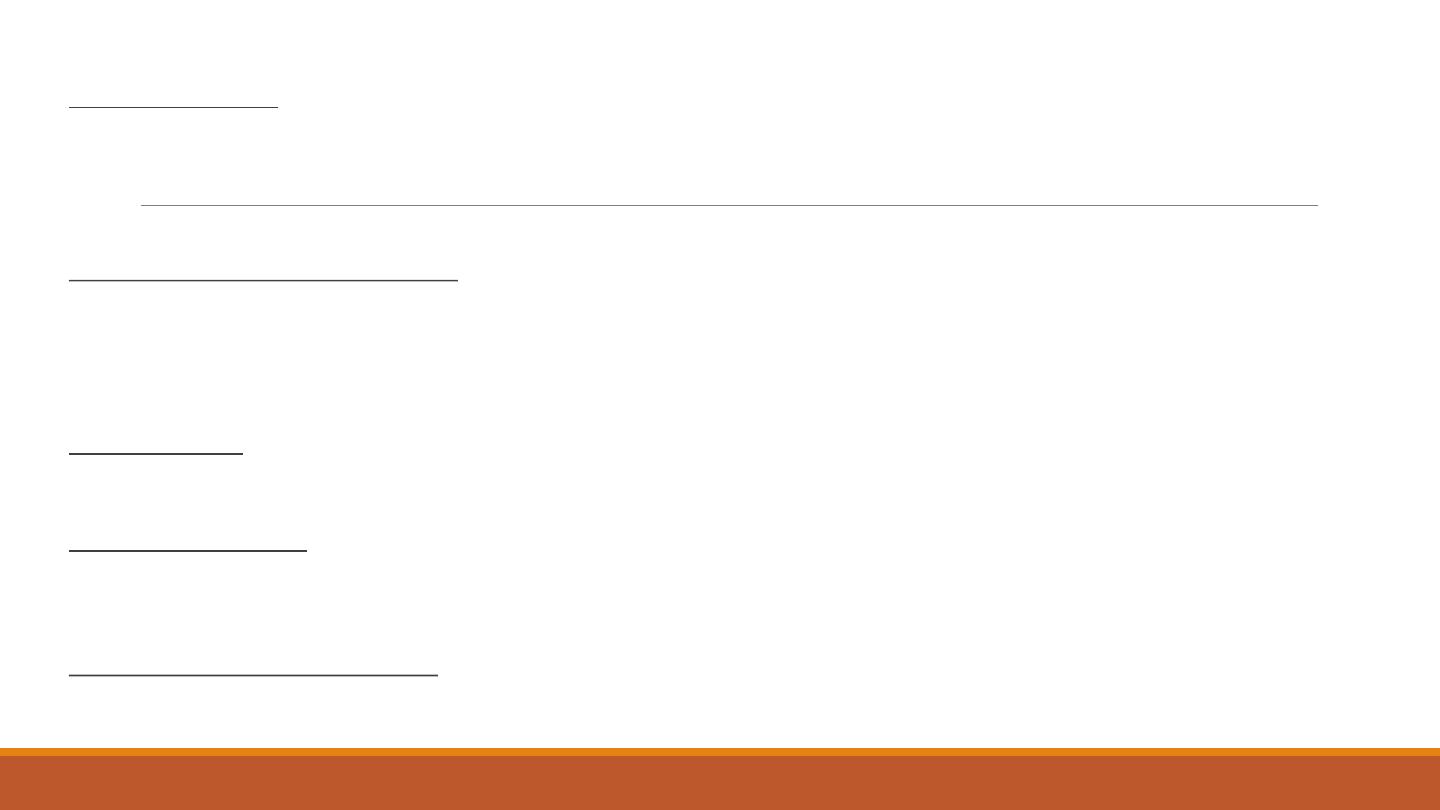
TRANSVERSE AND OBLIQUE INCISIONS
KOCHER ‘S INCISION
Incision parallel to the right costal margin. started at the midline, 2 to 5 cm below the xiphoid and extends downwards,
outwards and parallel to and about 2.5 cm below the costal margin
It shows excellent exposure to the gallbladder and biliary tract and can be made on the left side to show access to the spleen.
CHEVRON (ROOF TOP)MODIFICATION
The incision may be continued across the midline into a double Kocher incision or roof top approach which provide excellent
access to the upper abdomen particularly in those with a
broad costal margin
MERCEDEZ BENZ
consists of bilateral low Kocher’s incision with an upper midline incision up to the xiphisternum.
MCBURNEY GRID IRON
Made at the junction of the middle third and outer thirds of a line running from the umbilicus to the anterior superior iliac spine.
(The McBurney Point)
RUTHERFORD-MORRISON INCISION
This is extension of the McBurney incision by division of the oblique fossa
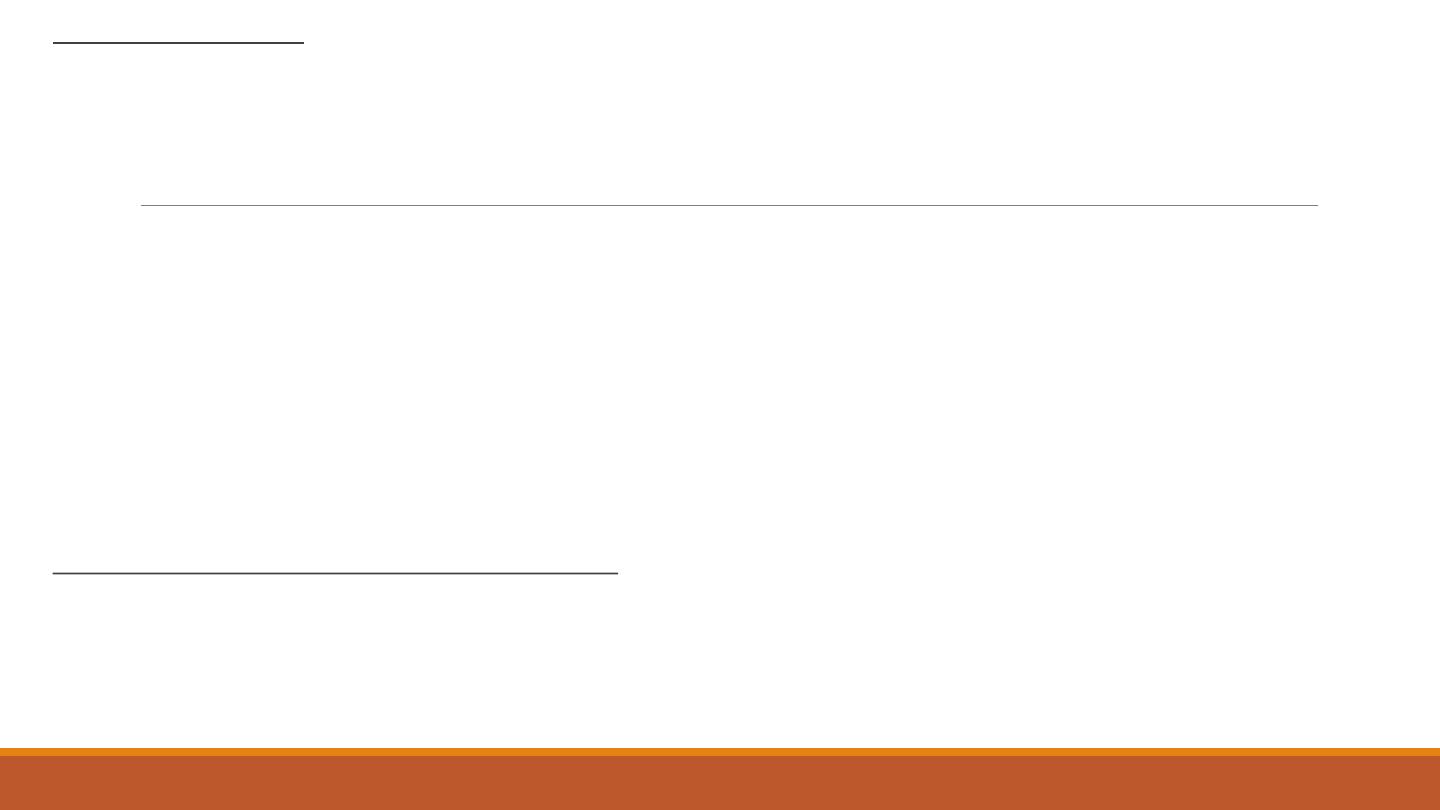
PFANNESTIEL INCISION
Used frequently by gynecologists and urologists for access to the pelvis organs, bladder, prostate and for caesarean section.
Usually 12 cm long and made in a skin fold approximately 5 cm above symphysis pubis.
skin fascia anterior rectus sheath rectus muscle transversalis fascia extraperitoneal fat perineum.
A convex incision which minimizing muscle parasthesia and paralysis post-operatively. It also follows the cleavage lines in
the skin resulting in less scarring
The incision offers Excellent cosmetic results because the scar is almost always hidden by the pubic hair
Limited exposure of the abdominal organs. Use of incision is therefore restricted to the pelvic organs
High risk of injury to the bladder
Extension of the incision is difficult laterally
MAYLARD TRANSVERSE MUSCLE CUTTING INCISION
It is placed above but parallel to the traditional placement of Pfannenstiel incision.
Gives excellent exposure of the pelvic organs.
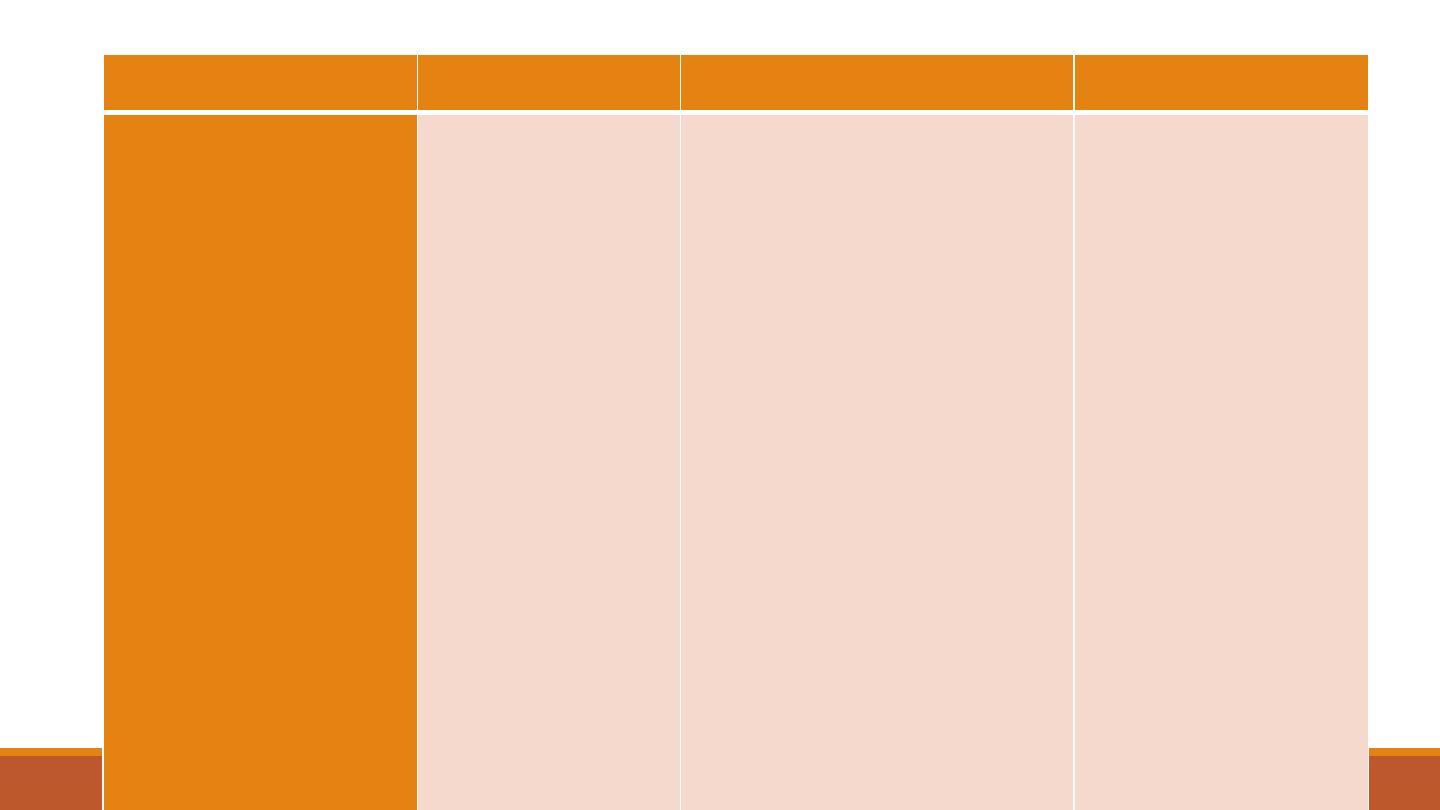
Midline
Para media
Transverse & oblique
thoracoabdominal
Vagotomy
Jejunostomy
Gastrectomy
Pancreatomy
Hysterectomy
LSCS
Cystotomy
Cystectomy
Salphingo oopherectomy
Right
Cholecystectomy
Pyroplasty
Left
Splenectomy
pancreadectomy
Kocher
Cholecystostomy
Heptectomy
chevron
Gastrectomy
Esophagectomy
Adrenalectomy
Mercedez benz
Liver transplant
Pancreatic transplant
McBurney
Appendectomy
Rutherford-morison
caecostomy or
sigmoid colostomy
Pfannestiel
Caesarean section
Hysterectomy
Hepatic resections
SURGICAL PROCEDURES
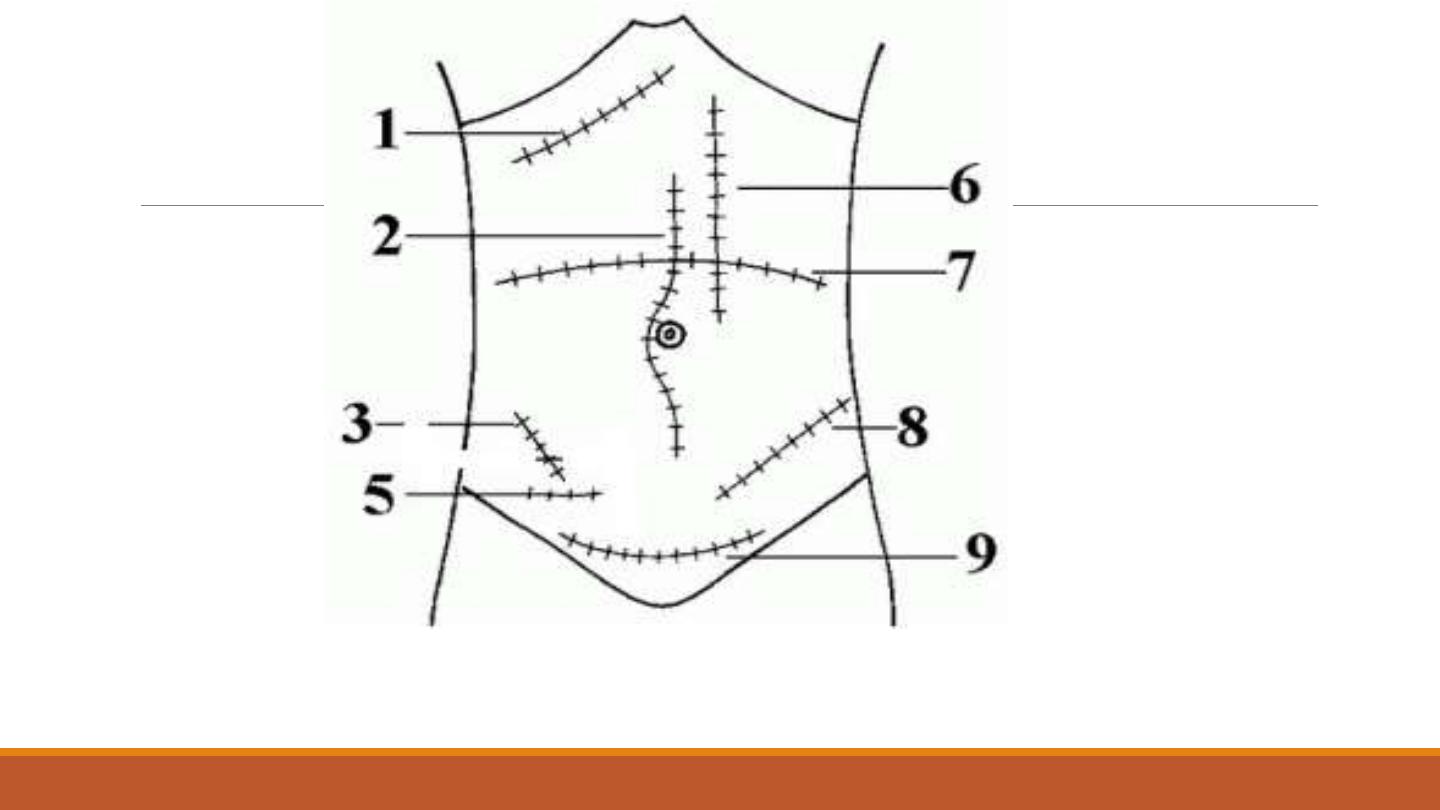
Kocher Incision: 1
Midline: 2
McBurney: 3
Lanz: 5
Paramedian: 6
Transverse: MUSCLE DIVIDING 7
Rutherford Morison: 8
Pfannenstiel 9
